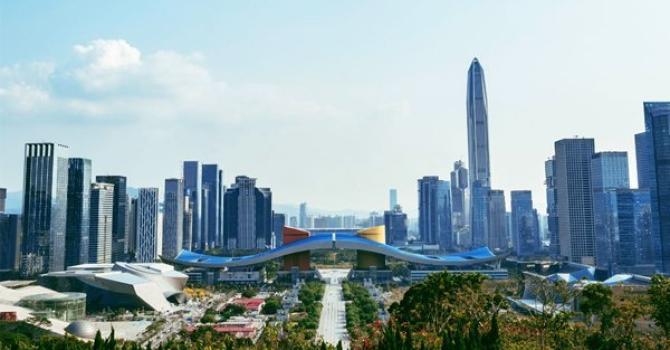Business sustainability is finally catching on, even in Hong Kong
- As governments mandate disclosure of corporate climate risks, companies have to measure their impacts on the environment
- Firms will then need to cooperate with many stakeholders up and down their supply and demand chains to see how they can reduce carbon emissions
You know the world is changing when you must learn new tricks. Governments are declaring carbon commitments. Regulations are mandating disclosure of corporate climate risks. Companies are wanting to hire people with sustainability skills. Industry leaders are adopting pro-environment and pro-social attitudes, consultants are beefing up their capability, and business schools are rolling out new courses.
ESG – environmental, social and governance – factors have become all the rage because regulators, including those in Hong Kong and on the mainland, are requiring greater disclosures with regard to corporate ESG performance.
Companies are hiring consultants to measure their carbon and pollutant emissions and waste. They then have to think about setting timelines and targets to reduce them and disclose their plans and results.
Measuring environmental footprints is a quantitative exercise that is relatively easy. Consulting firms can make such measurements and advise a company where and how to reduce their impact and at what cost.
There are good reasons to get on with it. For example, the Hong Kong government is set to impose a municipal waste charging scheme, probably before the end of 2023. That is a strong incentive for businesses to know how much waste they produce, and then to develop a waste reduction plan that includes separating recyclables from their waste stream to reduce the charge.
Businesses are also having to measure their carbon emissions. Apart from the direct emissions produced by activities that are owned or controlled by a company, it also has to reckon with the business’ energy use, like electricity, heating and cooling, which are provided by an outside company.
Even more complicated are the emissions generated in the life cycle of the goods and services produced by the company, such as third-party shipment of goods, business travel, and customers using the company’s products.
Despite the complexity, specialist consultants can identify the emissions. The challenge for the company is to decide what to do. It quickly becomes obvious that companies need to cooperate with many stakeholders up and down their supply and demand chains to get all the information and see how to reduce carbon emissions.
Companies and industries have to work together since they are all part of each other’s emissions. There are massive opportunities for everyone that could be profitable. To reap this potential, businesses need to engage with each other regularly.
Collaborating to innovate is the name of the game going forward. Governments need to engage too, and set the right policies with incentives and deterrents.
Companies have more questions about the social side of ESG, too. Managers are asking what they could do. Companies are working on complying with the law, such as on employee pay and working conditions. Better companies also pay for or contribute to employee training. That’s all straightforward enough.
In sourcing products, a company should make sure their contractors are law-abiding and do not take advantage of workers. The notion of corporate social responsibility (CSR) requires a company to take an interest in their supply chains to ensure their contractors are ethical in their businesses, too. That’s what is behind action on fair trade and ethnical sourcing of products.
Moreover, many companies engage in group activities for their staff such as helping with beach clean-ups, serving meals on wheels, and making corporate donations to charities for all sorts of good causes.
These are laudable activities but more can be achieved on the “social” side – the “S” in ESG – when combining it with the “environmental” side, the “E” in ESG.
For example, an owner of an office block can retrofit the building to provide higher environmental performance and at the same time provide occupants with better indoor air quality, improved ventilation, lower noise and greater comfort.
By measuring the benefits to occupants – which can be done – the company can calculate the positives arising from better health, which leads to higher productivity and well-being. The building owner needs to invest in measurements for these social benefits.
CSR and ESG have many similarities. They are both concerned with a company’s impact on society and the environment. The major difference is that CSR is a business model, whereas ESG are criteria that investors are now using to assess whether they wish to invest in a company.
As for governance, obviously companies need to comply with all the relevant laws and be well managed. A hot topic for boards today is diversity.
There is a global push to get more women onto boards. There are good business reasons for it, as women help to widen a company’s perspective. It pays to have broader experience that reflects society at large.
Age matters, too, since a business should seek to tap into views of a range of generations. If a business has a global or regional context, it obviously makes sense to have board members reflecting cultural diversities as well.
ESG, CSR and board diversity reflect a growing awareness of business sustainability. Obviously, a company needs to be profitable, otherwise there is no business – but their strategies also need to take into account the impacts on the planet, as well as all stakeholders, not just shareholders.
This is a global trend, including in Hong Kong. After all, a poor environment and social strife are bad for the economy and for business in the longer term.
This article is written by Christine Loh, chief development strategist, Institute for the Environment, HKUST The article has appeared on SCMP - https://www.scmp.com/comment/opinion/article/3173271/business-sustainability-finally-catching-even-hong-kong



